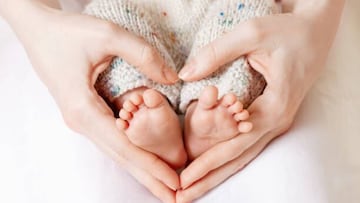Why ‘one and done’ is becoming the norm in the United States: These are the reasons for the declining birth rates
A growing number of families are deciding to have only one child despite a push by the government for them to do otherwise. What’s behind the trend?

The birthrate in the United States has been on the decline since it rebounded in the 1950s with the post-war baby boom. The total fertility rate went from around 3.5 in the 1960s to less than half that in 2024 according to CDC data.
The Trump administration is pushing for families to have more children with an executive order to give more access to in vitro fertilization and a ‘Trump Account’, which would deposit $1,000 into an ‘IRA for kids’ for every child born between 2025 and 2028.
However, experts say that these measures don’t tackle the larger needs of parents. “The things that they are doing are really symbolic and not likely to budge things for real Americans,” said Karen Guzzo, director of the Carolina Population Center at the University of North Carolina speaking to PBS.
This is just part of the reason more of them are deciding, when it comes to having children, ‘one and done’.
What’s behind the ‘one and done’ trend?
The White Houses efforts to increase the birthrate are going against decades of changes in American society. People are getting married later and deciding to start families later in life, as well as dealing with fertility issues, along with higher costs of living and raising a child.
The number of births for teenagers and those in their early twenties has decreased significantly, by around 68% and 44%, respectively, between the 1990s and 2023. Meanwhile, births have increased by 90% among women 35 to 39, and those 40 and older a staggering 193%, according to the CDC.
When it comes to assisted reproductive methods, whether used to delay having children to build a career or to combat fertility issues, many women are choosing not to go through the long and expensive process to have a second child Susan Newman, social psychologist and author of ‘Just One: The New Science, Secrets & Joy of Parenting an Only Child’, told USA TODAY.
Then there is the cost of raising a child. Daycare and preschool expenses have soared in the US, at twice the speed of inflation due to a national shortage of workers and facilities.
USA TODAY cites a report from the nonprofit Child Care Aware of America saying “the average cost of care for two children is more expensive than the average rent in all 50 states and the average mortgage payment in 45 states.”
Then once in school there are numerous expenses for extracurricular activities to raise a well-rounded child explained Toni Falbo, social psychologist and a professor in the educational psychology department at the University of Texas at Austin. “It is quite expensive because our expectations are very high,” she noted.
The “only child revolution”
On top of that the cultural pressure to have more than one child has evaporated. It used to be believed that there were negative effects for kids being an only child like loneliness, social awkwardness and that they were spoiled.
However, over 100 studies have shown the contrary and that they have “higher self-esteem like a firstborn, compared to somebody from a very large family,” Falbo shared. “Self-esteem is a bedrock of mental health.”
Furthermore, parents are choosing to have just one child for their own mental health. While having children improves maternal mental health, each additional child has been shown to reduce a mother’s happiness according to research.
Related stories
Get your game on! Whether you’re into NFL touchdowns, NBA buzzer-beaters, world-class soccer goals, or MLB home runs, our app has it all.
Dive into live coverage, expert insights, breaking news, exclusive videos, and more – plus, stay updated on the latest in current affairs and entertainment. Download now for all-access coverage, right at your fingertips – anytime, anywhere.

Complete your personal details to comment